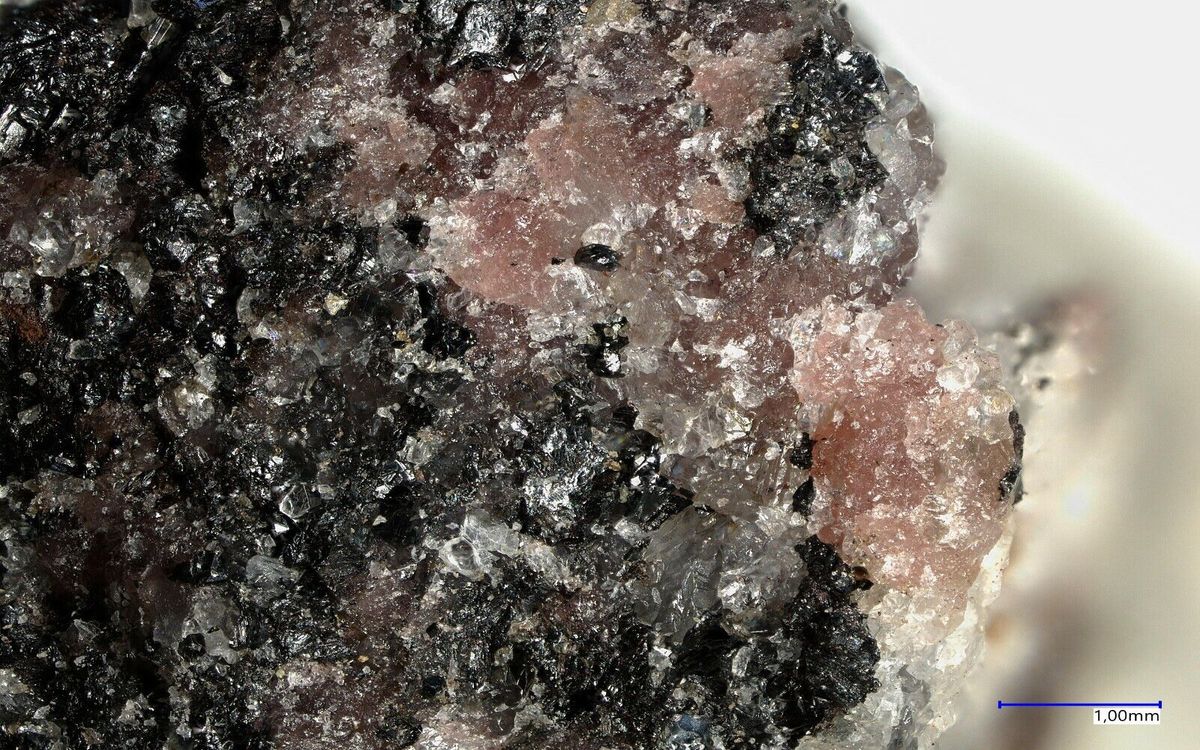
Sonolite is a rare mineral that often intrigues both geologists and gem enthusiasts. Found primarily in metamorphic rocks, this mineral boasts a unique composition and striking appearance. But what exactly makes Sonolite special? Its vibrant colors, typically ranging from pink to reddish-brown, catch the eye immediately. Beyond its beauty, Sonolite's chemical structure includes manganese, which contributes to its distinctive hue. This mineral isn't just a pretty face; it also offers insights into geological processes. Want to learn more about Sonolite? Here are 25 fascinating facts that will deepen your appreciation for this captivating mineral.
Key Takeaways:
- Sonolite is a rare mineral with a fascinating history, known for its unique properties and Japanese origins. It is primarily a collector's mineral due to its rarity and distinctive appearance.
- Sonolite's physical characteristics make it stand out among other minerals, with prismatic or tabular crystals, a hardness of 6 on the Mohs scale, and a color range from pink to reddish-brown due to manganese content.
What is Sonolite?
Sonolite is a rare mineral that belongs to the humite group. It is known for its unique properties and fascinating history. Here are some intriguing facts about this mineral that will spark your curiosity.
- Sonolite was first discovered in 1925 by Japanese mineralogist Ken-ichi Sugi.
- The mineral is named after the Sōno mine in Japan, where it was initially found.
- Sonolite has a chemical formula of Mn9(SiO4)4(OH,F)2.
- It is primarily composed of manganese, silicon, oxygen, and hydrogen.
- This mineral typically forms in metamorphic rocks, especially those rich in manganese.
Physical Properties of Sonolite
Sonolite's physical characteristics make it stand out among other minerals. Let's delve into its unique features.
- Sonolite crystals are usually prismatic or tabular in shape.
- The mineral has a hardness of 6 on the Mohs scale, making it relatively hard.
- Its color ranges from pink to reddish-brown, depending on the manganese content.
- Sonolite has a vitreous to resinous luster, giving it a shiny appearance.
- The mineral exhibits perfect cleavage in one direction, which means it can split easily along specific planes.
Occurrence and Locations
Sonolite is not found everywhere. Its occurrence is limited to specific geological settings. Here are some notable locations where it can be found.
- Besides Japan, Sonolite has been discovered in Sweden.
- In the United States, it has been found in Franklin, New Jersey.
- The mineral is also present in the Kalahari Manganese Field in South Africa.
- Sonolite is often associated with other manganese minerals like rhodonite and spessartine.
- It forms in high-temperature and high-pressure environments, typical of metamorphic rocks.
Uses and Applications
Although not widely used, Sonolite has some interesting applications. Let's explore how this mineral is utilized.
- Sonolite is primarily a collector's mineral due to its rarity and unique appearance.
- It is studied by mineralogists to understand the formation and transformation of manganese-rich minerals.
- The mineral's distinctive color and luster make it a subject of interest for gem enthusiasts.
- Sonolite can be used in educational settings to teach students about metamorphic minerals.
- It occasionally appears in mineralogical exhibitions and museums, showcasing its beauty and rarity.
Interesting Facts About Sonolite
Here are some additional fascinating tidbits about Sonolite that you might find intriguing.
- Sonolite belongs to the humite group, which includes minerals like clinohumite and chondrodite.
- The mineral's name, derived from the Sōno mine, highlights its Japanese origins.
- Sonolite's pink to reddish-brown color is due to the presence of manganese ions.
- It is often found in association with other manganese minerals, indicating similar formation conditions.
- Despite its rarity, Sonolite continues to captivate mineral collectors and geologists alike.
Final Look at Sonolite
Sonolite, a rare mineral, holds a unique place in the world of geology. Found mainly in metamorphic rocks, it’s prized for its distinctive pink to reddish-brown hues. This mineral, composed of manganese silicate, often forms in high-pressure environments. Its crystal structure and formation process make it a subject of interest for both amateur rockhounds and professional geologists.
Collectors value sonolite for its rarity and striking appearance. It’s not just a pretty face; its formation tells a story of geological processes deep within the Earth. While not commonly used in jewelry, its uniqueness makes it a sought-after specimen for mineral collections.
Understanding sonolite gives us a glimpse into the dynamic processes that shape our planet. Whether you’re a seasoned geologist or just curious about the natural world, sonolite offers a fascinating peek into Earth’s hidden treasures.
Frequently Asked Questions
Was this page helpful?
Our commitment to delivering trustworthy and engaging content is at the heart of what we do. Each fact on our site is contributed by real users like you, bringing a wealth of diverse insights and information. To ensure the highest standards of accuracy and reliability, our dedicated editors meticulously review each submission. This process guarantees that the facts we share are not only fascinating but also credible. Trust in our commitment to quality and authenticity as you explore and learn with us.
